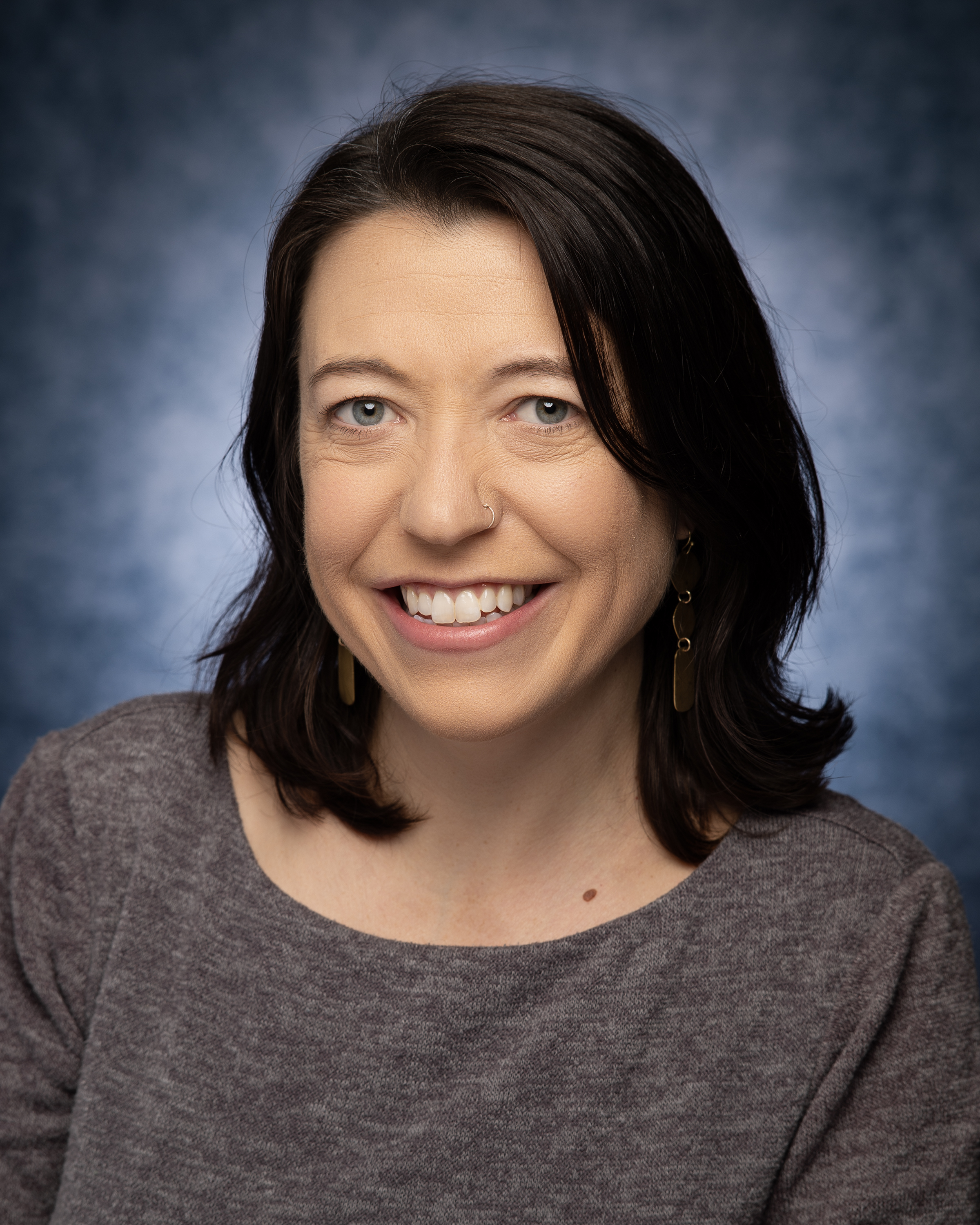Learn why Sakshi Mishra loves her job as an artificial intelligence researcher at the National Renewable Energy Laboratory finding climate solutions.
June 4, 2020
Having girls pursue education was already overcoming a cultural norm in Sakshi Mishra’s childhood, so to see her now as a machine learning and deep learning researcher at the National Renewable Energy Laboratory, leveraging algorithms to improve the energy efficiency of buildings, is a pretty big deal. How did she get into Artificial Intelligence (AI), and what advice does she have for others – especially women – to explore this career path? Read on to find out.
Engineering is For Girls (and Boys)
Sakshi grew up in India, with a mom who worked in English literature and a father in the state government who encouraged her interest in math and physics. An interest in clean energy has been with her since childhood. Sakshi distinctly remembers a 5 th grade project of building a wind turbine model using a thermocol sheet and writing a report about how it worked. In her community in India electricity blackouts were common. Her house had an inverter and charging system for supplying critical loads during outages and an old Fiat car with a battery needing a manual recharge often, that she was constantly asking her family questions about.
“As I approached my high school graduation, the growing curiosity and a healthy penchant for science and especially physics and mathematics saw me gravitating toward Electrical and Electronics Engineering for my undergraduate studies,” Sakshi said. “But the path to join an undergraduate degree program at VIT University was no bed of roses.” She was strongly advised against studying Electrical and Electronics Engineering, with a widespread belief in her community that ‘electrical engineering isn’t for girls’ because it was about machinery and building, which were not considered to be girls’ pursuits.
“After some initial skepticism, noticing my determination to follow this path,” Sakshi said, “my parents supported my decision. Having my family’s support, therefore, was critical for me to get started on the path that I found interesting and exciting.”
Moving over 1,000 miles for her undergraduate degree to southern India at VIT University, Sakshi soon was surrounded by other students who were also invested in advanced studies and pursuing educational opportunities, which sparked her own interest in going abroad for her graduate degree. Eventually, she got the opportunity to conduct her undergrad thesis at Deakin University, Australia, as a full-ride scholar.
Sakshi’s interests in renewable energy merged with AI when she moved to the United States for her master’s degree in Energy Science Technology and Policy at Carnegie Mellon University (CMU).
“With CMU being one of the top universities for robotics and artificial intelligence studies, I got introduced to the fascinating field of AI when I took a course on data-driven building energy management,” Sakshi said. When the semester ended, she continued learning about the types of problems that currently available AI algorithms are capable of solving, and “I started to realize that there are many many problems in the energy generation, transmission, and distribution domain that can be better addressed by utilizing AI. This further drew me into learning about how AI can be utilized for the energy field,” she said.
Sakshi describes AI as “yet another technological tool that can help machines learn without explicitly telling them what to do, but instead from data help execute tasks more efficiently.” There’re many layers to AI, she says, including computational tagging, AI, machine learning, and deep learning.
Why does AI matter to Sakshi’s work? “It’s a fast-evolving field that holds the promise of helping solve various climate change related conundrums that the scientific community is constantly striving to address,” she explains. “I wanted to use my time and skills to do something with a positive impact on the world. Personally, I believe advances in clean and sustainable energy development is one of the serious issues that needs to be addressed currently as it is impacting all parts of the world.”
Sakshi’s work with deep learning and AI helps solar and wind energy succeed, better predicting how much solar and wind will be available in the grid, and how long solar and wind assets will work so companies can prepare and replace them before they fail. The built environment is one of the world’s biggest energy consumers. As part of NREL’s Intelligent Campus project, Sakshi built a load forecasting framework to predict the energy consumption of various campus buildings that achieved better performance compared to the existing traditional approaches.
Her work in AI at the Lab will have impacts for academia, industry practitioners, consultants, renewable energy developers, and other research labs. She’s the development lead for the REopt Lite API - a tool that can help commercial building managers evaluate how long a grid system could maintain power during an outage, evaluate the economic viability of grid-connected PV, wind, and battery storage on-site, and identify battery dispatch strategies to minimize energy costs.
Landing at NREL for her career has been a huge win for Sakshi. “My experience of working at NREL has been positive beyond expectations - especially the interdisciplinary collaborative projects where researchers with different expertise come together to solve complex problems. I am learning something new every day,” she said.
Along with her work at the National Renewable Energy Laboratory, she’s engaged in Women in AI, an international organization aiming to increase participation of women in AI fields and bring up issues relating to bias in AI, working to eliminate bias being inadvertently included in the AI algorithms that are widely used in the industries. As an example, credit card companies use predictive algorithms powered by AI to assess an individual’s ability-to-repay. If the training data behind AI algorithms had minimum to zero training samples for a particular minority group, this inherent bias drives AI to bias lenders’ decisions.
Why is Sakshi working on this? “I think embracing diversity and increasing the participation of women in AI is a very important aspect to address and nurture - and the time is NOW to accelerate the efforts for doing so,” she said. “This is because women represent a smaller percentage of the workforce in STEM fields and even a smaller percentage of those women (who are in the STEM fields) are engaged in the field of AI. This needs to change.”. She adds, “when more women, from decision-makers to researchers and engineers writing the algorithms, are empowered with knowledge of AI, enabling them to see broader implications of deploying AI-systems – that’s when AI will be truly beneficial. It should grow to offer unbiased and objective insights from data as it seeps into various critical sectors and society as a whole.
“To girls,” Sakshi said, “the first thing I want to make sure is that they do see role models doing AI, and secondly to affirm them in their hopes and confidence. Tell people they are capable of doing it. Everything starts with curiosity. If they are curious and hold on to the curiosity, they will end up in a career that will be rewarding.”
Sakshi has had a few students working under her at NREL, and she’s tried to help and mentor them in their work. “I have had many wise and kind mentors along the way whose support and affirmation played a significant role in my personal and professional growth,” she said. “I am very grateful for that. I wish to pay it forward as I go.”
Her advice to high school students reading this is to “start out with computer science if you know already that AI is where you want to go,” but she notes that it’s never too late to pivot to an AI career if you stumble into this later in life. For undergraduate and graduate level students, she advises that taking classes on machine learning, python programming, and deep learning was very helpful to her career. “There is a big need for researchers and engineers with a hybrid skill-set. If your area of expertise is in a different STEM field and you are pivoting to an AI career, you can add significant value to your STEM domain by blending in AI,” she emphasizes.
“Equally importantly, the best way to work in the field of AI is by constantly applying the newly gained knowledge into practice by writing the code and experimenting with the algorithms,” she said. “If the goal is to pursue the first option of advancing the state-of-the-art of AI, then traditional education in the field of computer science has a lot of value to offer. But in my opinion, nothing beats the approach of ‘hands-on learning by experimentation,” she said.
“Real-life problems can be solved better because of AI,” she said. And this drives her work every day to make an impact on using AI to reduce costs and carbon emissions, increase energy efficiency and address climate change.
Learn more about STEM education opportunities on STEM Rising, www.energy.gov/STEM. Learn more about the Department of Energy’s Office of Artificial Intelligence at www.energy.gov/AI.


